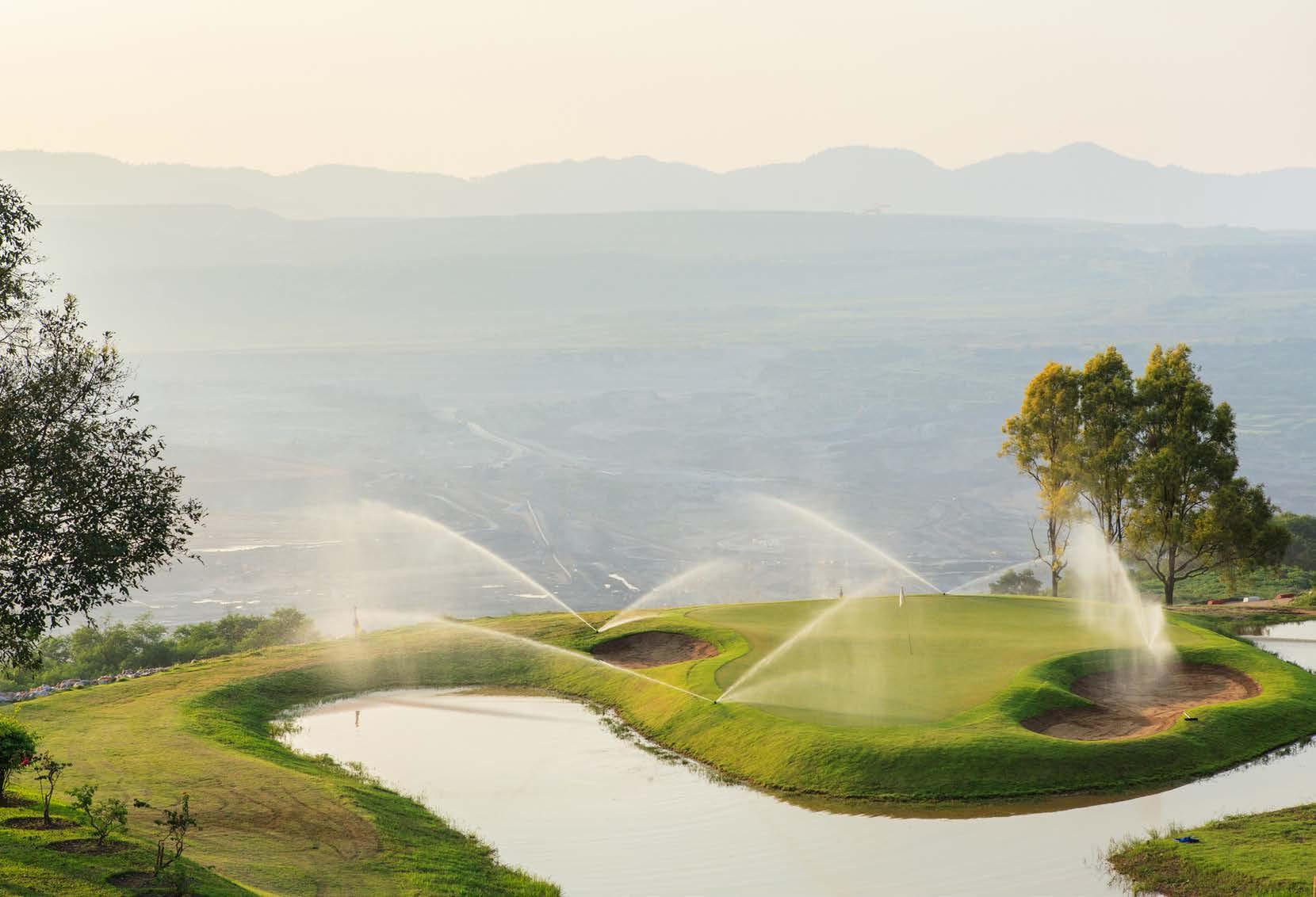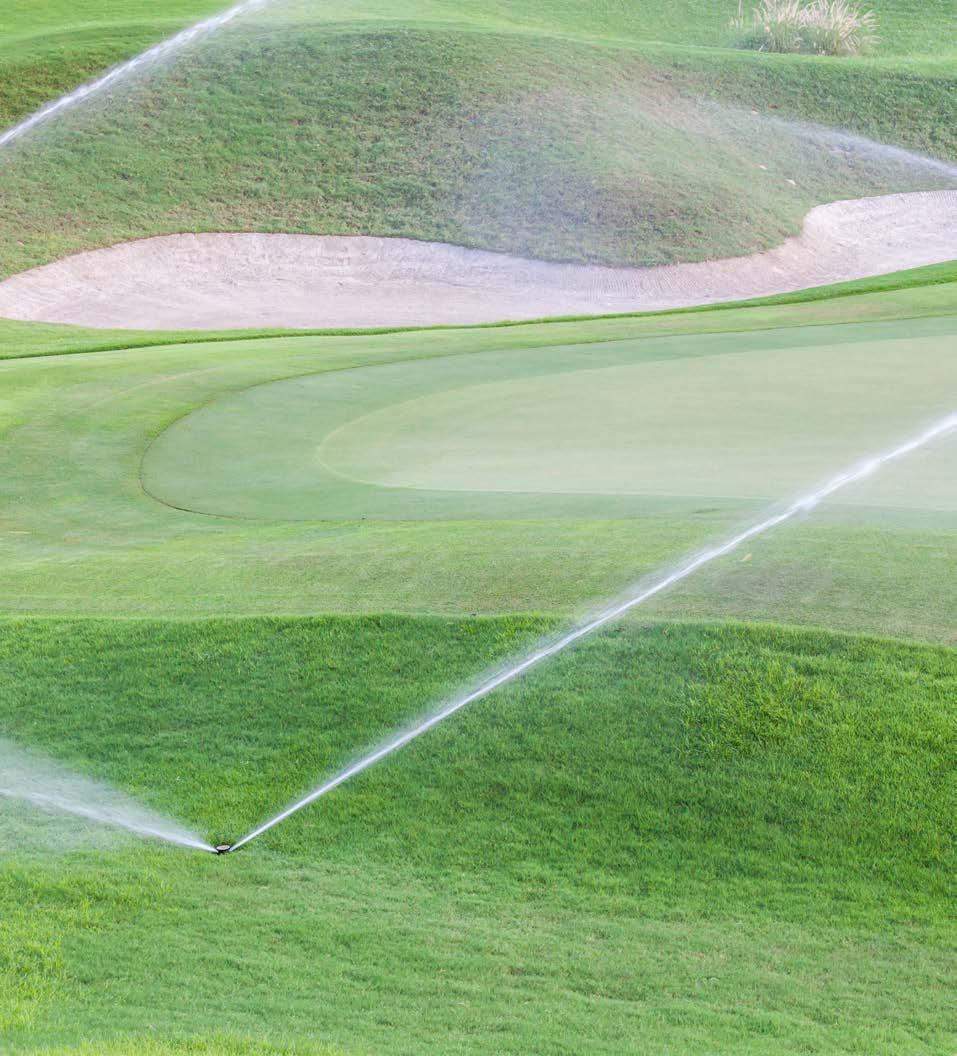
4 minute read
Irrigation Design Considerations for Golf Courses By Turfmanzi Irrigation’s Andy Blake
CONSIDERATIONS FOR GOLF COURSES Irrigation design
The global water crisis is at the forefront of discussions by the government and measures of efficient ways to conserve water are paramount. Even a golf course which harvests its own water or reclaims it, the water is ultimately used for irrigation and is therefore under the spotlight of the government and conservationists.
Advertisement
Professional golf course irrigation system design is the key factor to ensuring that these stringent requirements are met as outlined below.
Considerations for golf course irrigation design and technology:
Sprinklers need to be placed in strategic positions to cover only what requires watering, and nozzled specifically to provide an even distribution and matched precipitation rate of water during a cycle.
Site determining factors of graphical position; climatic conditions; which types of top/sub-soils; types of turf species are prevalent, will all needed to be taken into consideration during the design phases. Other site characteristics and important factors which need to be included are aspect to the sun; hill slopes; degrees of shade; wind exposed areas, etc.
The irrigation system design must be designed to match the peak demand within the client’s required watering window.
All sprinklers should be totally top serviceable, eliminating the unnecessary need to excavate around sprinklers for maintenance purposes.
All control zone valves should be pressure regulated to ensure that every zone is applying the same precipitation rate. Specifically, where they are operating on higher or lower elevations in relation to the water pumping source.
Pumping systems should be controlled by variable speed drives to provide the correct pressure and flow as demanded by the irrigation system at any given time. This ensures that only the required amount of energy is used depending on demand from the irrigation system.
A high quality, in-line hydraulic self-cleaning screen filtration system is paramount to good water quality.
Improving pond water quality is also a good practice and can be enhanced with professional sub-surface or surface aerators.
Automation of the system via decoder control enables system monitoring, daily feedback reports to the central computer and advanced diagnostic testing. In addition, system expansion is simply done by connecting to existing control cable and programme.
Integrated central control software should be accessible via smart phones and/or iPad for ease of on-site maintenance management.
Surveyed and recorded as-built drawings of the system must be provided, this enables for ease of future maintenance and system addon or alterations.
Coefficient of Uniformity (CU). CU measures system performance by how widely a system varies in distribution. A CU of 100% means that a system is uniform. A CU of 84% or better is considered acceptable for high value products. Because the CU is calculated with the absolute value of the deviations, the score does not indicate whether the system is over or under-watering. In addition, the score does not indicate what section of the area tested is not performing.
Distribution Uniformity of the Lowest Quartile (DULQ). The most commonly used calculation to determine uniformity of a sprinkler layout, DULQ is the ratio of the average measurements in the lowest 25% of samples to the overall average of all samples expressed as a percentage. For example, a DULQ of 60% means that the lowest 25% of the samples measured only received 60% of the average water applied. Some resources suggest that a DULQ of 65% or less is poor, 75% is good, and 85% or more is excellent.
Scheduling Coefficient (SC): measures the average water applied to the driest, most critical areas of an area under test and compares to the average. An SC of 100% implies the distribution is uniform. An SC of 120% indicates that the average was 120% more water applied than the driest area. The SC is often used to adjust run times to ensure that the driest areas receive the required scheduled water replacement. The disadvantage of this method is that all other areas receive 20% too much water, increasing the risk of run-off and leaching.
The critical management practices for golf course irrigation:
Avoid irrigating during the heat of the day and/or when it is very windy.
Regularly analyse and manage soil conditions around the course to ensure no hydrophobic circumstances are present.
Reduce irrigation in secondary rough areas and if possible, eliminate watering completely in non-play areas.
Apply water as consistently as possible depending on soil conditions and grass type.
Apply water only as quickly as the soil can accept it – use short duration cycles to avoid puddling and run-off. Have a drought emergency plan on hand to balance critical golf course water demands when water recourses become minimal.
Avoid over-irrigating golf courses in spring. A continually saturated soil at the root zone prevents the development of a deep, fibrous root system, which will make it difficult for the turf to survive the summer heat without extra irrigation.
Automate your irrigation system via an integrated computerised management system. Incorporate a weather station to your system which will assist in daily irrigation replacement needs and also manage the system to minimise watering depending on climatic conditions – it will shut down system during rain, etc.
Internet link from the system to the course superintendent mobile or iPad ensures close management of the system even if not on the course.

Andy Blake, head of golf course irrigation design for the Turfmanzi Irrigation Company













